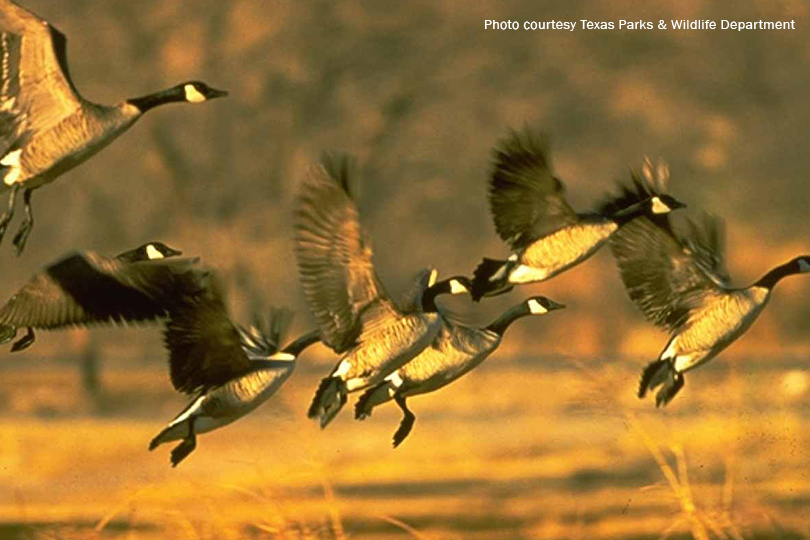By Jessica Domel
Multimedia Reporter
There’s good news for duck and goose hunters in Texas. The Texas Parks and Wildlife Department (TPWD) is forecasting a good year for hunting despite drought in U.S. and Canadian breeding grounds.
“There are lots and lots of ducks out there despite having a pretty significant drought in the breeding grounds this past summer, which ultimately results in low productivity, which manifests itself into fewer young birds in the flock,” Kevin Kraai, TPWD Waterfowl program leader, said. “Ideally, everything’s always a little bit better for hunters if there’s a bunch of young and educated ducks in the flock.”
TPWD is expecting fewer birds in total and fewer young birds, especially with dabbling ducks—green wings, blue wings, gadwall, widgeon, mallards and pintails.
“With that said, we are on the heels of multiple years of good production, so the flock is still very, very healthy,” Kraai said.
There are still millions of birds in the Central Flyway.
“If things line up where we have good fall and winter cold fronts, ice makes its way all the way down to the Red River, we could be looking at a very, very good duck season,” Kraai said.
As of late October, there were already a fair amount of waterfowl in Texas, and Kraai said conditions are good.
“The good news is we had a cooler and wetter than normal summer, which is good for growing foods that are very important to the life cycle of a duck,” Kraai said. “Pretty much across the state, we were looking at above-average conditions throughout the summer.”
Fewer big storms hitting the Texas coast will also impact duck hunting.
“We always have our eye towards the Gulf in the late summer and early fall. Big storms can really impact habitat along our Gulf Coast region, mostly in a harmful way, but we didn’t have a lot of storms this year,” Kraai said. “The storms that did come in didn’t have a lot of tidal surge.”
When sea water enters freshwater marshes and brackish marshes on the coast, it can be dramatic and damaging.
“That didn’t occur this year, and so that’s really good news for our coastal environments,” Kraai said. “If anything, most of those were rain events, which just improved our habitat.”
A La Niña has developed in the Equatorial Pacific, which typically brings warmer and drier than normal weather to Texas.
Kraai said as long as there is cold to the north, it’s not necessarily a bad thing.
“When you’re looking at hunting success on a large scale, being a little bit dry is typically better, because it concentrates birds in a smaller amount of surface water, obviously exposing them to where the hunters are more frequently,” Kraai said.
Season dates and regulations are available in the printed Outdoor Annual, on OutdoorAnnual.com and in the Outdoor Annual app.
Hunters should purchase their new 2021-22 Texas hunting license, and waterfowl hunters must have a migratory game bird endorsement, federal duck stamp and be Harvest Information Program certified. For more information, visit tpwd.texas.gov.

